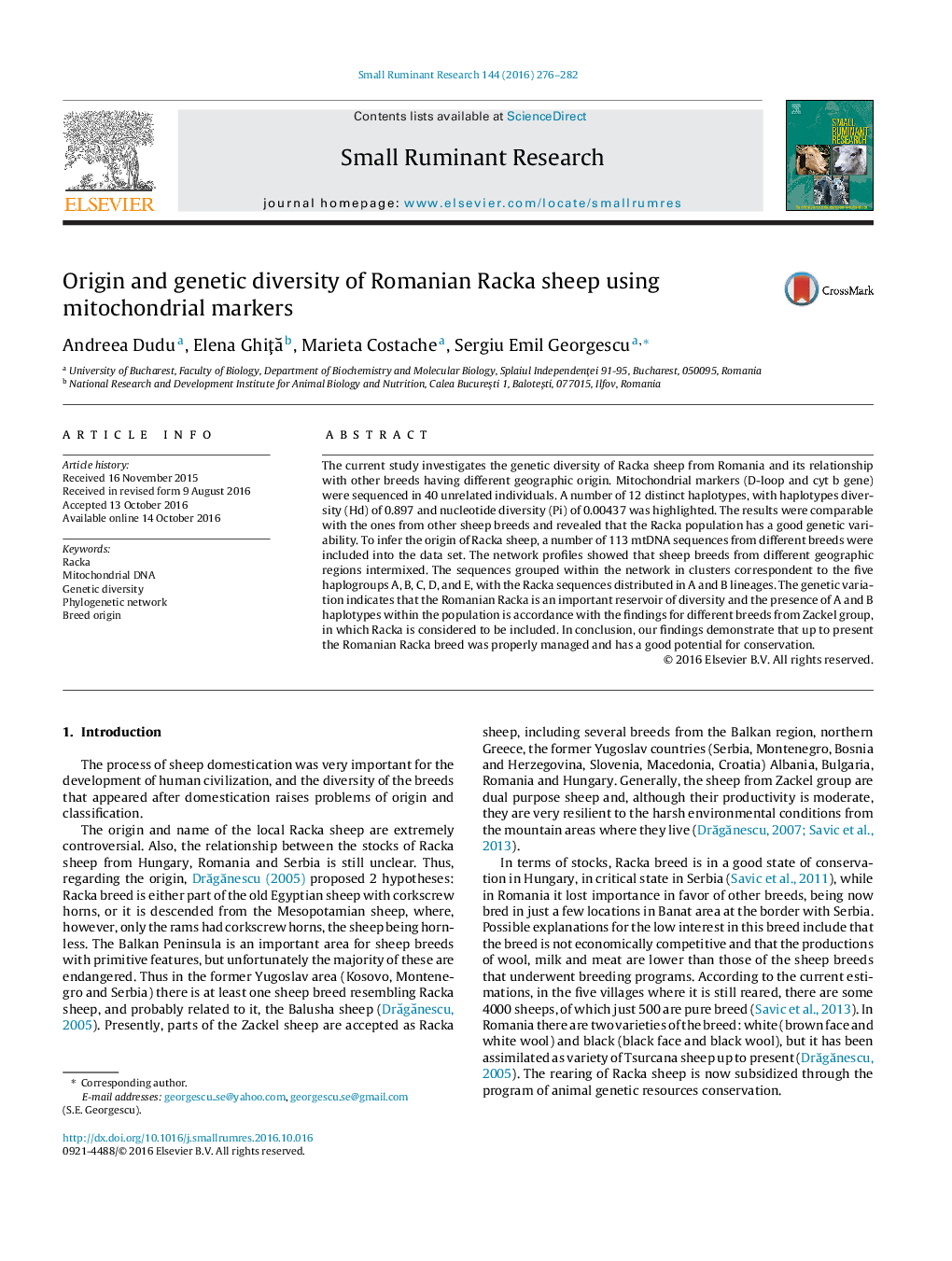| Article ID | Journal | Published Year | Pages | File Type |
|---|---|---|---|---|
| 5795288 | Small Ruminant Research | 2016 | 7 Pages |
â¢We use mtDNA markers to infer the genetic diversity and origin of Racka breed.â¢We found high haplotypes and nucleotide diversity within breed.â¢The haplotypes network grouped Romanian Racka into A and B lineages.â¢The molecular data for Racka breed are similar to those found in Zackel group.
The current study investigates the genetic diversity of Racka sheep from Romania and its relationship with other breeds having different geographic origin. Mitochondrial markers (D-loop and cyt b gene) were sequenced in 40 unrelated individuals. A number of 12 distinct haplotypes, with haplotypes diversity (Hd) of 0.897 and nucleotide diversity (Pi) of 0.00437 was highlighted. The results were comparable with the ones from other sheep breeds and revealed that the Racka population has a good genetic variability. To infer the origin of Racka sheep, a number of 113 mtDNA sequences from different breeds were included into the data set. The network profiles showed that sheep breeds from different geographic regions intermixed. The sequences grouped within the network in clusters correspondent to the five haplogroups A, B, C, D, and E, with the Racka sequences distributed in A and B lineages. The genetic variation indicates that the Romanian Racka is an important reservoir of diversity and the presence of A and B haplotypes within the population is accordance with the findings for different breeds from Zackel group, in which Racka is considered to be included. In conclusion, our findings demonstrate that up to present the Romanian Racka breed was properly managed and has a good potential for conservation.
